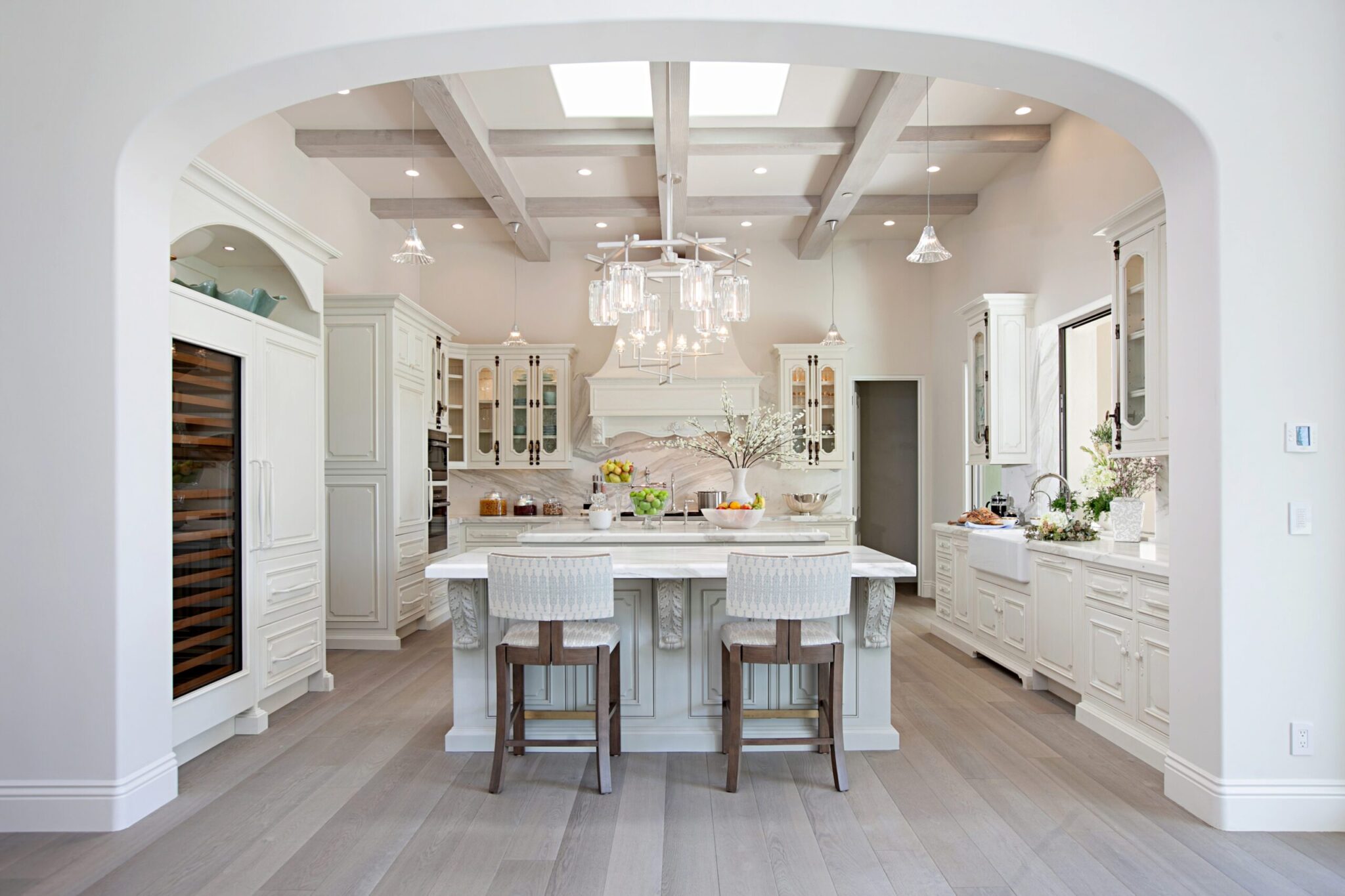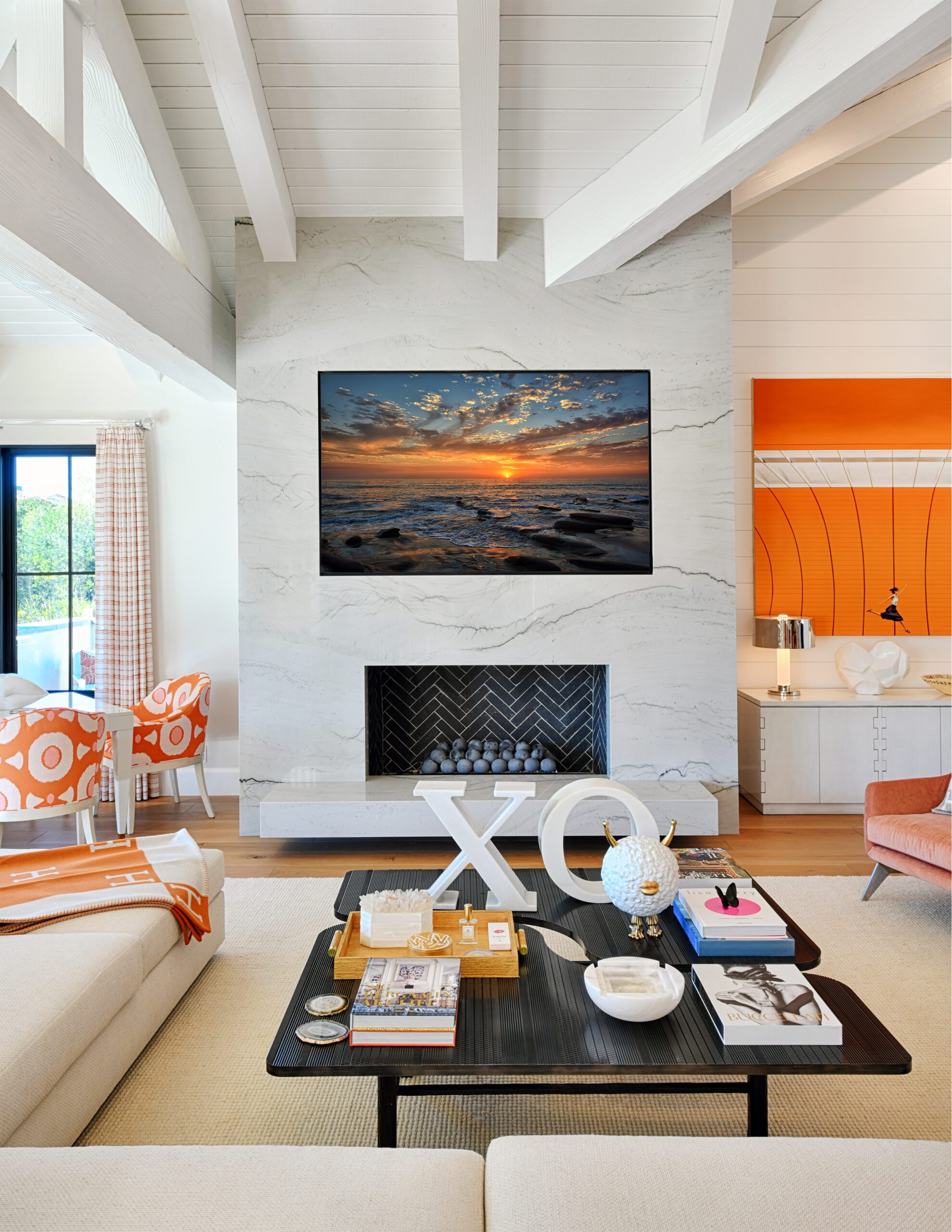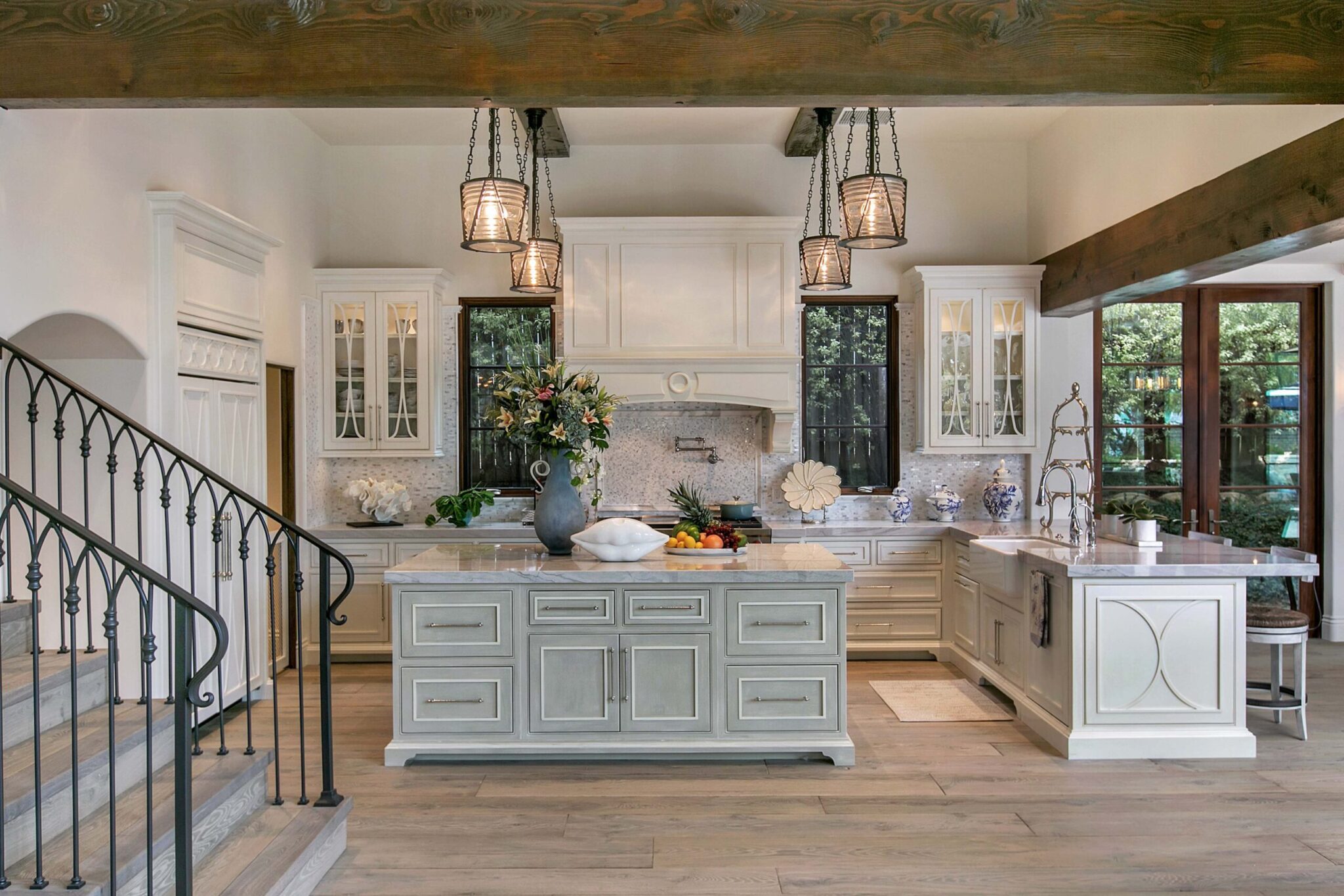Designing for a New Era
Interior design in 2025 reflects a profound shift in how people live, rest, and connect. The post-2020s world has redefined the value of personal space, emphasizing wellness, practicality, and ecological mindfulness. This year marks a pivot toward design that prioritizes not only appearance but emotional and psychological wellness. As aesthetics and intentionality merge, the trends shaping this moment offer more than beauty—they offer balance.
The Rise of Soulful Seasonal Color Palettes
Color Forecasts for 2025
The sterile, monochromatic schemes of the past are being replaced by hues that feel grounded, nostalgic, and emotionally resonant. Earthy greens inspired by olive groves, soft apricots with a sun-faded warmth, muted clay tones reminiscent of adobe landscapes, and stormy, oceanic blues dominate the 2025 color landscape. These tones embrace imperfection and create a sense of connection to nature, time, and place.
The Psychology of Color in Interior Spaces
Color selection impacts more than aesthetic preference—it influences emotional well-being, cognitive clarity, and physiological response. Chromotherapy, the practice of healing through color, underpins much of today’s design psychology. Warm tones stimulate sociability and energy, while cool tones support tranquility and introspection. Color placement in a space can either soothe the nervous system or engage it with renewed vitality.
Seasonal Color Integration: Room-by-Room Suggestions
- Kitchens: Lean into energizing tones like sun-washed terracotta or spiced turmeric to encourage conversation and creativity.
- Bedrooms: Opt for serene tones like eucalyptus green, dusty lavender, or muted indigo to foster restful sleep and intimacy.
- Home Offices: Incorporate balanced hues like slate blue or greige to support focus, reduce anxiety, and sustain productivity throughout the day.
Sustainable Materials Meet Luxurious Aesthetics
Conscious Design: The New Luxury
Sustainability is no longer a secondary consideration—it is the new hallmark of refinement. Today’s most discerning clients seek ethically sourced materials, transparent supply chains, and products crafted with both environmental stewardship and artisanal precision. Luxury is now defined as a commitment to longevity, authenticity, and responsibility.
Natural Materials That Dominate in 2025
Expect a rise in tactile, earth-forward finishes. Textured oak, reclaimed walnut, and charred timber bring warmth and integrity. Clay plasters and limewash walls offer softness and subtle movement, while recycled glass and remnant stone slabs add elegance with a conscience. The resurgence of vintage and salvaged architectural elements brings layered history into modern contexts.
Tactility & Texture in Design
Touch has become as essential as sight in creating elevated spaces. Bouclé, handwoven textiles, and brushed velvet upholsteries draw the hand in. Handmade tiles in imperfect glazes, woven wall coverings, and carved stone accents invite interaction. Texture speaks quietly but resonates deeply, adding intimacy and richness without excess.
Intuitive Layouts & Wellness-Oriented Spaces
Designing with Flow and Function in Mind
Biophilic principles are guiding the evolution of space planning. Flow is prioritized over footprint, with layouts crafted to support how people move, breathe, and engage with their surroundings. While open plans are still valued, they are now tempered with refined zoning techniques to provide both connection and retreat.
Room Functions Are Evolving
Spaces are being reimagined to support holistic wellbeing. Primary suites now feature meditation corners or sound therapy lounges. Bathrooms emulate spa environments with chromatherapy tubs, infrared saunas, and aromatherapy showers. Kitchens are becoming “wellness hubs,” integrating water purification, nutrient-rich appliances, and natural lighting.
How Layout Affects Cognitive Load and Daily Wellbeing
Intentional spatial flow reduces decision fatigue. Clutter-free zones, clear lines of sight, and natural pathways create visual ease and mental calm. When each room serves its purpose without friction, the result is an interior that not only functions smoothly but fosters psychological clarity.
Statement Pieces & Artistic Risk-Taking
Bespoke and One-of-a-Kind Accents
2025 interiors are sculptural, layered, and deeply personal. Lighting is no longer a utility—it’s a centerpiece. Think alabaster pendants, bronze sconces, and asymmetrical glass fixtures that double as art. Furniture is treated as sculpture: curved sofas, amorphous coffee tables, hand-carved dining chairs. Local artisans are at the heart of this movement, embedding stories and meaning into everyday forms.
Embracing the Unexpected
Elegance now includes the element of surprise. Tasteful mismatching—such as combining antique pieces with futuristic silhouettes—introduces tension and vitality. Strategic use of saturated color, oversized scale, or asymmetry brings drama without chaos.
How Individualism is Reshaping Modern Interiors
There is a growing rejection of homogenized design. Today’s most compelling homes reflect the idiosyncrasies of their inhabitants: travel mementos, heirloom textiles, personal collections. This trend isn’t about maximalism, but about authenticity—curating a home that tells a story no algorithm could replicate.
Expressive Minimalism: A Refined Return to Restraint
The Rise of Warm Minimalism
Minimalism is evolving. Gone is the sterile, monastic aesthetic once associated with the style. In its place, a warmer, more expressive form of minimalism is taking root—one that embraces curated restraint rather than rigid omission. The palette is softer, the silhouettes more organic, and the materials richer.
Subtle Detailing Over Visual Noise
In 2025, every detail matters. Think thin-edge countertops in natural stone, hand-stitched upholstery seams, and low-sheen finishes that absorb rather than reflect light. These quiet luxuries encourage the eye to slow down and appreciate nuance. Surfaces are left uncluttered, not because they are devoid of life, but because every piece has earned its place.
Emotional Clarity Through Simplicity
This trend acknowledges the mental toll of overstimulation. Expressive minimalism offers visual relief—a pause within the home. Through smart editing, spaces feel grounded and intentional. Fewer pieces mean better pieces, and more room to breathe, reflect, and feel at ease.
Heritage Revival: Bridging Past and Present
A Return to Character-Rich Design
2025 marks a renewed interest in designs that honor legacy. Homeowners and designers alike are seeking ways to weave the past into the present. This isn’t about nostalgia—it’s about bringing authenticity and soul into contemporary spaces. Arched doorways, coffered ceilings, heirloom furnishings, and traditional craftsmanship are making a refined comeback.
Global Influences and Cultural Resonance
Designers are incorporating global heritage through artisanal pieces and regionally inspired motifs. From Mediterranean tilework to Japanese tansu chests and Andean woven fabrics, homes are becoming more layered with cultural intention. These elements not only celebrate heritage but offer a design language that is both personal and timeless.
A Counterbalance to Uniform Modernism
As minimalism and mass-market aesthetics dominate, heritage revival offers contrast. Patina, variation, and historical references introduce richness and individuality. In a sea of algorithm-driven design, these nuanced elements restore a sense of depth and identity.
Tech-Savvy Yet Invisible
Integrated Technology in High-End Interiors
Smart home integration has matured from novelty to necessity. In 2025, technological innovation is embedded—never imposed. Circadian lighting, voice-activated shades, and adaptive HVAC systems are seamlessly woven into the architecture. Wellness tech, including air purification sensors and EMF-reducing materials, further enhances the home’s role as sanctuary.
Design That Balances Function and Discretion
Discretion is key. Charging stations are hidden in drawer compartments. Speakers are embedded in ceilings or concealed in custom millwork. Kitchen counters rise to reveal appliance lifts, while media rooms vanish behind sliding paneling. The objective is harmony—technology that supports, never competes.
Staying Trend-Forward Without Losing Timelessness
Knowing When to Embrace and When to Resist a Trend
Not every trend deserves permanence. Skilled designers approach trend integration as layering—adding relevance without diluting the essence of a space. The best updates are subtle: a new colorway in drapery, a sculptural console, a refreshed texture palette. Fleeting fads are avoided in architectural details or core furnishings.
The Role of the Interior Designer in Curating Wisely
Interior designers serve as editors, not just creators. They distill trends through the lens of functionality, taste, and client lifestyle. The goal isn’t to showcase what’s fashionable but to craft what feels inevitable—a space that belongs, endures, and evolves.
Designing a Beautiful, Meaningful 2025
Trends in 2025 are more than stylistic waves—they are expressions of deeper values. Beauty is no longer detached from meaning. Design that honors wellness, individuality, and integrity creates environments that nourish not just the eye but the spirit. This is a year to design with purpose, not perform.
Let Kern & Co. help you craft interiors that stand at the intersection of artistry, innovation, and intention. Begin your next chapter with a space tailored to who you are and how you live.
Frequently Asked Questions
What are the top interior design trends for 2025?
The five most influential trends include soulful seasonal color palettes, sustainable yet luxurious materials, wellness-driven layouts, personalized artistic statements, and integrated yet discreet technology.
How can seasonal colors impact mood?
Seasonal colors influence emotional states through psychological and sensory cues. Warm earthy hues can promote comfort and sociability, while cool muted tones foster relaxation and mental clarity. When used strategically, color enhances both ambiance and daily functionality.
Should I follow trends or focus on timeless design?
Striking a balance is ideal. Trends add freshness and context, but timeless design principles—quality materials, classic forms, and personalization—ensure that your space remains meaningful and functional long after the trend cycle moves on.



